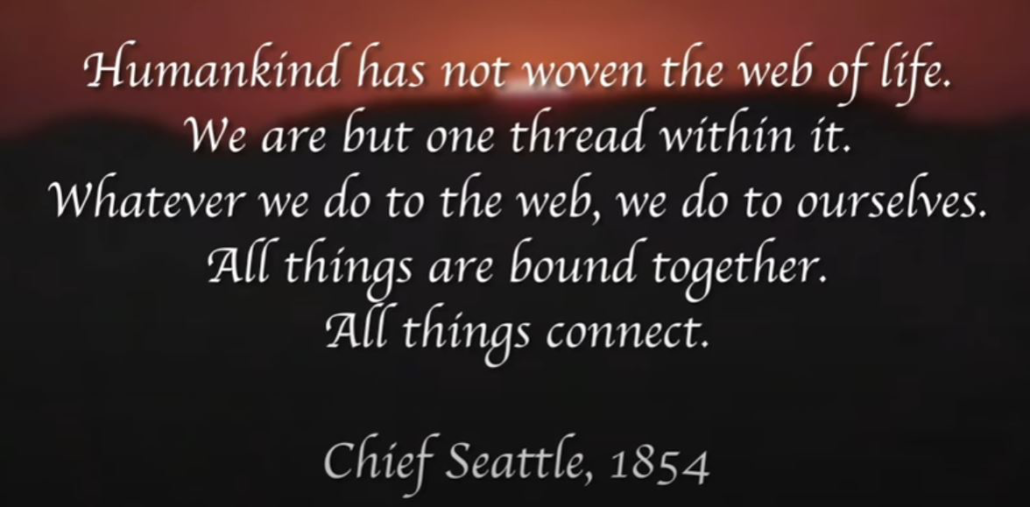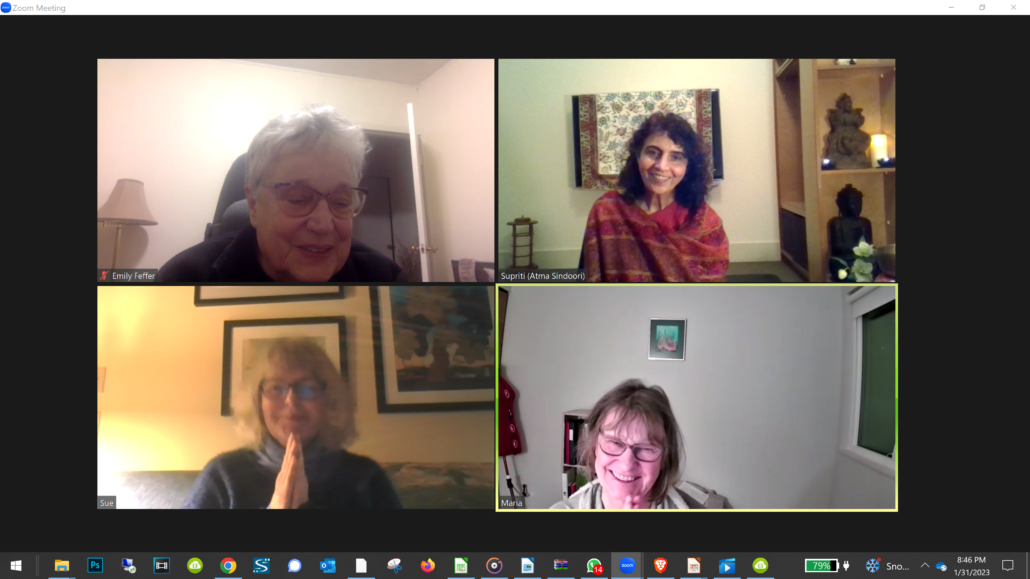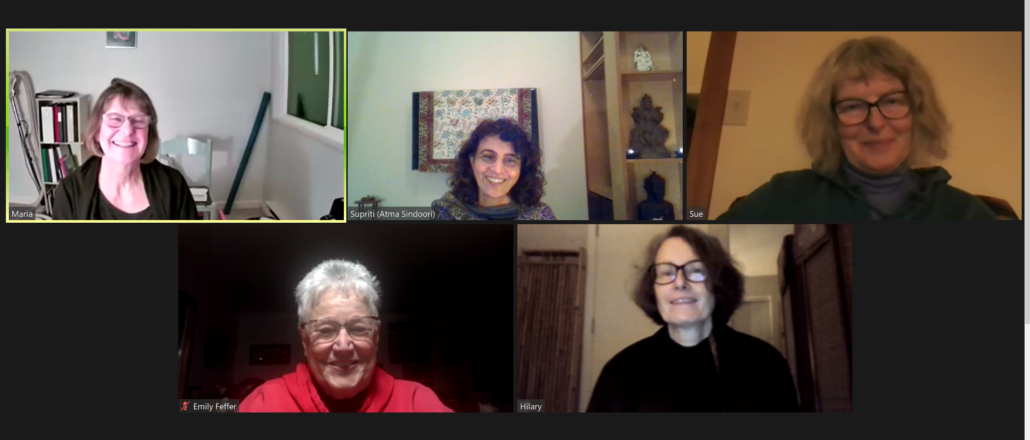We come together, to “just sit”. We listen to the silence. We listen to our thoughts, We listen to our feelings and emotions. Not concentration, only awareness of all the arisings…And catch glimpses of a gap…a silent gap between two thoughts.
Too many thoughts, the monkey mind, veils the gap.
Multiple methods and techniques in various traditions are all aids to “settle the mind” so we get established in steadier glimpses of the “gap”, the sky behind the clouds, the screen behind the movie, our true nature. When we “just sit”.
Pranayama or Breathwork is one such tool that helps immensely when incorporated in a daily routine.
We have shared 2 Pranayama’s thus far: (Below, I share from a workbook from the Ayurveda Institute)
1. BRAHMARI or BEE’s BREATH
Brahmari in Sanskrit translates to bumble bee. In this prānāyāma, we are mimicking the sound of a bee buzzing, by closing off all of our senses and creating a humming sound. The “Bee’s Breath” soothes the nerves and calms the mind. During this practice, the breath makes a steady, low pitched ‘hum’ sound at the back of the throat on the exhale (like the humming of a bee). The bee goes to the flower and creates a humming. sound around the flower, and the flower opens its heart allowing the bee to get the pollen. There’s a beautiful romance going on between the flower and honeybee. Likewise, in mankind there is a beautiful lotus behind the breastbone. Through bhrāmarī prānāyāma the lotus blooms more and secretes divine nectar. It unfolds the love divine. Hum is the bīja of the ether element. Therefore, bhrāmarī breath unfolds the ether element in all bodily channels. It removes the occlusion of the channels so energy and prāna can flow freely.
Benefits • Calms and soothes the mind and nervous system • Helps with throat and thyroid ailments • Relieves stress and anger • Reduces blood pressure • Induces good sleep • Improves the function of the thyroid, parathyroid, and thymus gland to support immune function
Contraindications • None
Progression Bhrāmarī is to be practiced with 1 round. It is important to note that is imperative your spine remain straight. Start off with a round of 7, slowly progressing up to a total of 17.
2. ANULOMA VILOMA or Alternate Nostril Breathing (Yogic)
Anuloma Viloma is considered the king of all prānāyāmas. It merges the right and left brain hemispheres into the diencephalon—the place of choiceless, passive awareness. It is said to “unfold the inner blissful state of being.” Anuloma Viloma means to and fro, prograde and retrograde, to come and go, the up and down, in and out movement of prāna. Lunar energy is offered to the Sun and solar energy is offered to the Moon. Male energy is merging into female and female and into male, Ardhanareeswarar. When we offer male into female and female into male, a neutral zone is created.
Benefits • Reduces depression and migraines • Clears the sinuses • Brings high levels of vitality to visceral organs • Regulates agni • Decreases cholesterol • Strengthens immune system • Brings clarity to the mind, inducing contentment and serenity
Indications • Depression • Migraines • Blocked sinuses • Poor digestion • High cholesterol • Insomnia
C
Progression Anuloma Viloma is to be practiced with 2 rounds with a rest of 2-3 minutes between each round. Begin with 2 rounds of 7. Slowly increase your practice until you reach 2 rounds of 30 each. This may take a few months to reach this point. Do not feel discouraged.






